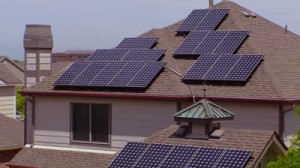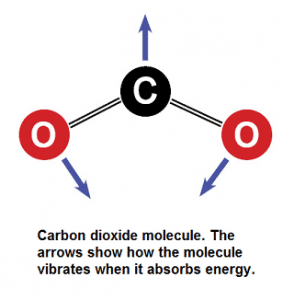Saturday, February 28th, 2015
John Upton, - Scientific American
Stephan: We have Senator James Inhofe throwing snow balls in the Senate chamber and laughing in denial of climate change. In Europe they are a little more serious, and fact-based. American Exceptionalism is taking on a very different and far less flattering meaning.

Credit: Shutterstock
While American lawmakers have succumbed, yet again, to a preoccupation with the debate over whether a pipeline should be built through the U.S. to help Canadian tar sands miners reach intercontinental oil markets, European officials have been spending the week knuckling down on climate action.
On Tuesday, the European Parliament’s environment committee agreed on a plan to shore up the continent’s flagshipcap-and-trade program, which has been ailing for years. Coincidentally, one day later, the European Commission outlined its vision for how Europe and the rest of the world should work together under a new U.N. pact to spare the planet the worst effects of climate change.
What’s Europe’s master plan?
The European Union’s executive body sent a memo to EU lawmakers and heads of state Wednesday, outlining what it called a “blueprint for tackling global climate change beyond 2020.” It was drafted to help the EU prepare for U.N. climate negotiations ahead of a key round of talks in Paris in December, when a post-2020 global agreement is due to be finalized.
“All […]
No Comments
Saturday, February 28th, 2015
, - Der Spiegel (Germany)
Stephan: I am beginning to detect a growing trend towards changing the capitalist economic model from one in which profit is the only priority to one in which wellness is the priority, and profit must be made within that paradigm.
The fact that this interview should appear in one of the most prestigious and influential German publications just as the European powers are meeting to address climate change, should not go unremarked.

Naomi Klein is the author of a new book on climate change called “This Changes Everything: Capitalism vs. the Climate.”
Credit: Anya Chibis
Can we still stop global warming? Only if we radically change our capitalist system, argues author Naomi Klein. In an interview with SPIEGEL, she explains why the time has come to abandon small steps for a radical new approach.
SPIEGEL: Ms. Klein, why aren’t people able to stop climate change?
Klein: Bad luck. Bad timing. Many unfortunate coincidences.
SPIEGEL: The wrong catastrophe at the wrong moment?
Klein: The worst possible moment. The connection between greenhouse gases and global warming has been a mainstream political issue for humanity since 1988. It was precisely the time that the Berlin Wall fell and Francis Fukuyama declared the “End of History,” the victory of Western capitalism. Canada and the US signed the first free-trade agreement, which became the prototype for […]
No Comments
Saturday, February 28th, 2015
Ari Phillips, - Think Progress
Stephan: Electrical utilities are fighting for their corporate lives. Here's what is going on in Arizona. The conversion to non-carbon is also a trend toward decentralization, and that has profound economic implications. The real regulator as to how fast this conversion happens, I think, is how this nuts and bolts — literally — part of the equation is handled.

Arizona neighborhood solar Credit: Shutterstock
Starting in April, solar users across Arizona will be subject to an additional rate charge of about $50 per month. This new “demand charge” will be based on a solar users’ peak power demand during the month and will be levied regardless of how much electricity is offset by their residential solar units.
The Salt River Project (SRP), one of the nation’s largest public power utilities, has been fighting for this and other renewable energy fees because of what the company argues is needed to cover grid infrastructure and maintenance costs. This final approval of the plan by the elected board, which also includes a 3.9 percent rate increase for all customers, actually dropped proposals to raise existing solar customers’ charges in ten years as well as a new charge on buyers of solar homes.
“Reliability is our most important product,” said Chief Financial Executive Aidan McSheffrey. “To retain the level of service our customers have come to expect from SRP, we must continue to invest in modernizing our energy grid to adapt […]
No Comments
Saturday, February 28th, 2015
Tom Philpott, - Mother Jones
Stephan: I have been following the chemical-pharmaceutical industrial model of animal husbandry trends for a number of years now. And, just as in climate change, there has been an over-riding constant. In climate change it is the collapse of the timeline. In this trend the constant across years: the increasing corruption of regulatory institutions by the corporations they are supposed to regulate. I think the corporations simply see it as a cost of doing business. They push the bounds of animal treatment, and human safety as far as they can in the interest of increased profit. This is a world view driving a business strategy, and it is not life-affirming.

Hog abattoir
Credit: brianislavpudar/Shutterstock
In 2004, Elsa Murano stepped down from her post as chief of the US Department of Agriculture division that oversees food safety at the nation’s slaughterhouses. Two years later, she joined the board of directors of pork giant Hormel, a company that runs some of the nation’s largest slaughterhouses. Murano received $238,000 in compensation for her service on Hormel’s board in 2014 alone.
This is a classic example of the “revolving door” that separates US government regulators from the corporations they regulate. It’s hardly the most shocking thing I gleaned from the whistleblower-protection group Government Accountability Project’s recent exposé of conditions at three hog slaughter facilities associated with Hormel. But it’s interesting to think about in light of GAP’s allegations, found in sworn affidavits filed by four USDA inspectors stationed in Hormel-owned plants. Three of the inspectors chose to remain anonymous; the fourth, Joe Ferguson, gave his name.
Their comments focus on three Hormel-associated plants, which are among just five hog facilities enrolled in a pilot inspection program run by the USDA. In the […]
No Comments
Friday, February 27th, 2015
, - San Francisco Chronicle
Stephan: The linkage of CO2 and temperature rise has now been established through directly objective measurement. Nothing to do with modelling. Climate deniers have now completely entered the tinfoil hat world. This essay raises what I think are the relevant issues based on that that reality.

Credit: thomasnet.com
Climate change skeptics are a tough lot. They are isolated on the fringe of the science world and much of their work rightly ridiculed as funded by self-serving energy companies. But there their dug-in beliefs are enough to give cover to do-nothing lawmakers.
Now the final bit of evidence has arrived that may overcome the damaging influence of climate change deniers. The findings should compel leaders both here and around the globe to face an avodiable peril and take steps to correct that harm slowly building in the world’s atmosphere.
A panel of scientists, including several from the Bay Area, have pinpointed levels of a key heat-trapping gas long blamed for wild swings in the weather. It may sound like an overly detailed point, but it’s an important one: Documentation now backs the ample evidence and interpertation of climate change’s profound effects.
The fresh facts have an important role to play. A global gathering under the auspices of the United Nations is due later this year amid doubts about how to herd so many countries […]
No Comments
















